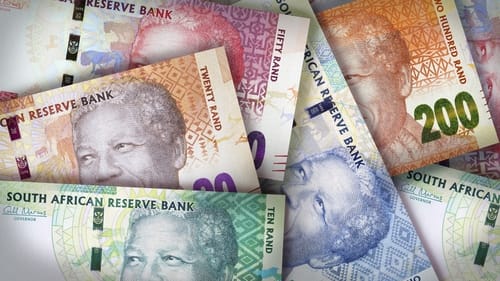The South African rand is in trouble. The currency has declined by more than 1% against the US dollar, 0.87% against the British pound, and by 0.90% against the euro. This makes the rand among the worst-performing currencies today. Let us look at the key reasons why the USDZAR is up sharply today.
The USDZAR pair is trading at 17.2100.
South Africa’s coronavirus cases rise
Two weeks ago, we celebrated the fact that South Africa was reopening. At the time, the USDZAR was in a sharp upward trend because the government had started to allow companies to go back to business.
Today, the story has changed as the number of infections has started to rise. Data from Worldometer shows that the government confirmed more than 4,300 new cases yesterday. This was the highest daily number ever recorded. At the same time, as shown below, the number of active cases has been in a sharp upward. The number of deaths has also been on an upward trend.
The new trend was easy to predict because of how different South Africa is from other western countries. For example, a significant amount of people live in informal settlements, which means that it is difficult for them to do social distancing. Similarly, having a nationwide lockdown is mostly impossible because of how people live there.
Also, the fact that South Africa was in a recession means its budget for large scale testing was still not enough. Therefore, there is a possibility that the government will reinstate the previous lockdowns as it tries to battle with the virus.
The second reason why the South African rand has weakened is because of technical factors.
Download our Q2 Market Global Market Outlook
USDZAR technical outlook
As seen below, USDZAR reached a high of 19.3300 in April. Since then, the pair has been in a downward trend, and last week, it formed a hammer pattern, with the lowest shadow being at 16.3492. This price was below the 50% Fibonacci retracement on the daily chart. This is usually an important retracement level, where the price tends to reverse.
Now, the price has found some resistance at the 38.2% retracement level. Any movements above the current price will send a signal that this is not a dead cat bounce and that the bullish trend will continue. This is the case because the price is now in the fourth wave of Elliot Wave.
If the price fails to move above this level, it means that the USDZAR pair will resume the downward trend and possibly test the 61.8% retracement at about 15.900.
Don’t miss a beat! Follow us on Telegram and Twitter.
More content
- Download our latest quarterly market outlook for our longer-term trade ideas.
- Follow Crispus on Twitter.
- Do you enjoy reading our updates? Become a member today and access all restricted content. It is free to join.

